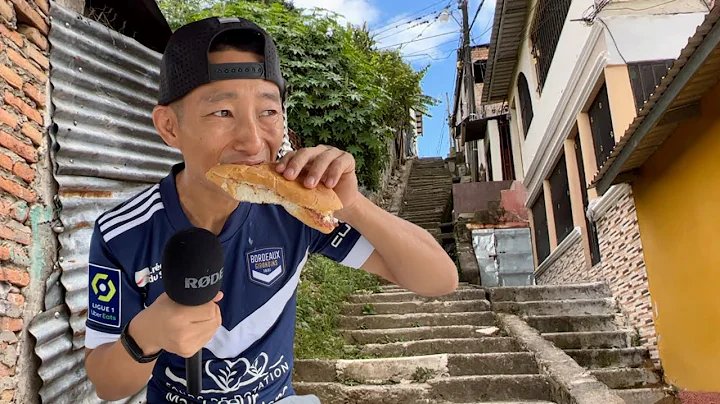The Ultimate Guide to Cleaning and Sanitizing Baby Bottles
Table of Contents
- Introduction
- The Importance of Cleaning Baby Bottles
- Hand Washing Baby Bottles
- Sterilizing Baby Bottles: Boiling Method
- Sterilizing Baby Bottles: Using an Actual Sterilizer
- Proper Techniques for Sterilizing Baby Bottles
- Drying and Storing Baby Bottles
- Frequency of Cleaning Baby Bottles
- Using the Dishwasher to Clean Baby Bottles
- Conclusion
How to Clean and Sanitize Baby Bottles: Everything You Need to Know
🍼 Introduction
Being a parent comes with a plethora of responsibilities, and one essential task is keeping your baby's bottles clean and properly sanitized. In this comprehensive guide, we will walk you through the different methods and techniques to ensure your little one's feeding equipment is germ-free and safe for use. Let's dive in!
🍼 The Importance of Cleaning Baby Bottles
Before we begin, it's crucial to understand why cleaning and sanitizing baby bottles is of utmost importance. Just like how you wash new clothes before putting them on your baby's delicate skin, cleaning the items they put into their mouths is equally essential. This step becomes even more crucial for newborns with their developing immune systems and sensitive digestive tracts. Regular cleaning helps remove harmful bacteria and ensures a hygienic feeding experience for your little one.
🍼 Hand Washing Baby Bottles
When it comes to washing baby bottles, hand washing is a simple and effective method. Start by washing the bottles with hot water and soap. Ensure all parts of the bottles are disassembled and thoroughly rinsed to remove any residual soap. Hand washing with soap and water provides a good cleaning routine for everyday use.
Pros:
- Simple and doesn't require any additional equipment.
- Allows for a thorough cleaning of all bottle parts.
- Can be done anytime without relying on other appliances.
Cons:
- Requires manual effort and time.
🍼 Sterilizing Baby Bottles: Boiling Method
Sterilizing your baby bottles is an extra step that many parents choose for added peace of mind. The boiling method is a classic technique that effectively kills harmful bacteria. Here's how you can sterilize your baby bottles using boiling water:
- Wash the bottles with soap and water.
- Fill a pot with enough water to cover all the bottle parts.
- Submerge the washed and rinsed parts in the pot, ensuring there are no air bubbles.
- Place the pot on the back burner of the stove and bring the water to a boil for about 5 minutes.
- Turn off the stove and allow the water to cool down.
- Using clean tongs, remove the sterilized items and place them on a clean dish towel or paper towel in a protected area to air dry thoroughly.
Pros:
- An effective method to kill bacteria.
- Doesn't require any additional equipment.
Cons:
- Requires careful attention to avoid burns.
- Time-consuming.
🍼 Sterilizing Baby Bottles: Using an Actual Sterilizer
Apart from the boiling method, there are actual sterilizers available in the market that streamline the process. These sterilizers use steam to kill 99.9% of harmful bacteria in just a few minutes. There are different types, including microwave sterilizers and plug-in sterilizers. Follow the manufacturer's instructions to use them effectively and ensure the bottles are properly sanitized.
Pros:
- Quick and efficient sterilization process.
- Minimizes the risk of burns compared to the boiling method.
- Offers convenience with different types available in the market.
Cons:
- Requires additional equipment.
- Cost may be a consideration for some parents.
🍼 Proper Techniques for Sterilizing Baby Bottles
Regardless of the method you choose, there are some important techniques to keep in mind for effective sterilization:
- Always wash bottles with soap and water before sterilizing.
- Disassemble all bottle parts and ensure they are thoroughly rinsed.
- Follow manufacturer's guidelines when using sterilizing equipment.
- Use clean tongs or utensils to handle sterilized items and avoid contamination.
🍼 Drying and Storing Baby Bottles
After the bottles have been cleaned and sterilized, proper drying and storage are essential. Avoid using dish towels to rub or pat items dry, as this may transfer germs back onto the bottles. Instead, allow the bottles to air dry on a clean, unused dish towel or paper towel in an area protected from dirt and dust. Once dried completely, store them in a clean and secure place until the next use.
🍼 Frequency of Cleaning Baby Bottles
The American Academy of Pediatrics (AAP) recommends cleaning bottles after every feeding. Germs can quickly multiply if breast milk or formula is added to a partially used bottle or if the bottle is only rinsed instead of properly cleaned. However, for older healthy babies, daily sanitizing may not be necessary as long as the bottles are thoroughly cleaned after each use.
🍼 Using the Dishwasher to Clean Baby Bottles
For busy parents, using the dishwasher can be an efficient way to clean baby bottles. Ensure that the bottles and their parts are dishwasher-safe and placed securely on the top rack. Follow the manufacturer's instructions for the appropriate dishwasher settings. The heat and detergent used in the dishwasher can effectively kill germs and provide a thorough cleaning.
Pros:
- Convenient and time-saving.
- Allows for a thorough cleaning with hot water and detergent.
- Suitable for parents who already use the dishwasher for other dishes.
Cons:
- Not all bottles and parts are dishwasher-safe.
- May not reach the high temperatures of boiling or sterilization.
🍼 Conclusion
Keeping your baby's bottles clean and properly sanitized is crucial for their health and hygiene. Regular hand washing and sterilization routines are effective ways to ensure a safe feeding experience. Remember to follow the guidelines and recommendations provided by manufacturers and healthcare professionals. With these practices in place, you can provide your little one with a clean and germ-free feeding environment.
For more information on the best feeding and cleaning gear for your family, visit babylist.com.
Highlights:
- Cleaning and sanitizing baby bottles is crucial for your baby's health.
- Hand washing and sterilization are effective methods for cleaning.
- The boiling method and sterilizers are popular ways to sanitize bottles.
- Proper techniques, drying, and storage are essential for bottle hygiene.
- Using the dishwasher is a convenient option for busy parents.
- Regular cleaning and sanitizing help prevent the growth of harmful bacteria.
FAQ:
Q: Can I use regular detergent for cleaning baby bottles?
A: It's recommended to use a mild baby bottle soap or dish soap specifically designed for cleaning feeding equipment. Regular dishwashing detergent may leave residue and should be avoided.
Q: How often should I sterilize baby bottles?
A: It depends on the age and health of your baby. Newborns, premature babies, and those with weakened immune systems may require daily sterilization. Older healthy babies can have bottles cleaned thoroughly after each use.
Q: Can I sterilize bottles in the microwave?
A: Yes, there are microwave sterilizers available that use steam to sterilize bottles. Follow the manufacturer's instructions for safe and effective use.
Resources: babylist.com







